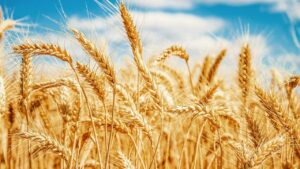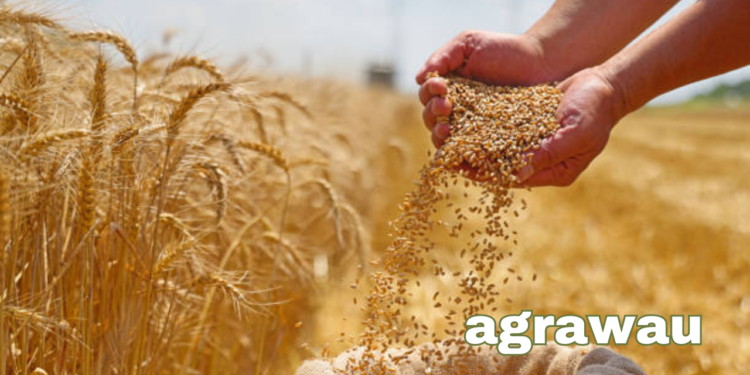Introduction to Agrawau
Agrawau is a term that encapsulates a rich tapestry of cultural significance and historical context, primarily rooted in specific geographical regions. The word itself often evokes a sense of belonging and community, drawing its origins from the languages and dialects spoken in regions where traditional practices remain vibrant. Agrawau is not merely a term; it serves as a bridge linking generations, capturing the essence of customs and communal values that have persisted through time.
Geographically, agrawau is predominantly associated with certain locales where the traditions reflected in its meaning are actively celebrated. These areas are often characterized by their unique cultural landscapes, where people engage in rituals and practices that reinforce their identity. The significance of agrawau extends beyond mere linguistic definition; it embodies the historical narratives and social frameworks of the communities that embrace it.
Culturally, agrawau holds a prominent place in discussions surrounding heritage, identity, and continuity. As societies evolve, the relevance of agrawau continues to inform contemporary dialogues, particularly in the realms of arts, education, and social cohesion. In a world increasingly dominated by globalization, the concept of agrawau serves as a reminder of the importance of rooting cultural practices in local history and collective memory.
In contemporary discussions, agrawau is essential for understanding the complexities of cultural identity and the ways in which traditions adapt to meet modern challenges. It invites individuals to reflect on their own connections to their heritage while offering insights into the broader human experience. As we delve deeper into the significance of agrawau, it is vital to appreciate its role in sustaining traditions and fostering shared values, ensuring it remains a relevant concept in both individual lives and broader societal contexts.
The Cultural Importance of Agrawau
Agrawau holds a prominent position in the cultural landscape of various communities, serving as a vital element that shapes local customs, traditions, and celebrations. In many regions, agrawau is not merely a concept but a living practice that embodies the beliefs and values of its practitioners. It acts as a cultural anchor, providing individuals with a sense of identity and belonging that is passed down through generations.
For instance, in certain communities, agrawau is celebrated during pivotal life events such as weddings, births, and harvest festivals. These occasions often include rituals where agrawau is invoked, reflecting its significance in fostering social cohesion and community spirit. The stories shared by elders who have witnessed the evolution of agrawau reinforce its importance. They recount moments where agrawau served as a guiding principle, helping to navigate life’s challenges and strengthen familial bonds.
Additionally, agrawau enriches local folklore and artistic expressions. Many traditional songs, dances, and artworks pay homage to agrawau, illustrating its integration into the cultural narrative. These creative forms not only function as a means of artistic expression but also as educational tools, teaching younger generations about their heritage and the values associated with agrawau.
The role of agrawau extends beyond immediate cultural practices; it is also a bridge connecting the past with the present. As communities evolve, the significance of agrawau adapts while remaining deeply rooted in historical customs. This dynamic relationship illustrates how agrawau influences the social fabric, enabling continuous dialogue between traditions and contemporary life. Through such intergenerational exchanges, agrawau not only preserves cultural identity but also inspires a collective vision for the future.

Modern Interpretations and Adaptations of Agrawau
The concept of agrawau has evolved significantly in contemporary society, navigating the intricate waters of modern interpretations and adaptations. As globalization and technology reshape cultural practices, agrawau is not exempt from these influences. In recent years, digital platforms have become instrumental in promoting agrawau, facilitating a broader discourse around its significance, thus enabling individuals and communities to reinterpret its tenets in ways that resonate with their current realities.
For instance, many organizations now utilize social media to share insights and personal experiences related to agrawau, effectively creating a global community focused on its values. Some proponents emphasize a return to traditional practices, while others advocate for innovative approaches that incorporate modern lifestyles. This nuanced dialogue highlights the dynamic nature of agrawau, showcasing its ability to adapt while maintaining its core essence.
Interviews with practitioners reveal mixed feelings regarding these modern adaptations. As one community leader noted, “While technology opens new avenues for sharing agrawau, it also poses challenges in preserving its authenticity.” This sentiment underscores the delicate balance that advocates must strike between embracing innovation and safeguarding the rich heritage of agrawau. Additionally, the influence of global cultural trends cannot be overlooked; as agrawau interacts with various practices worldwide, it has the potential to be diluted or misinterpreted.
Furthermore, the rapid pace of change presents both challenges and opportunities. Proponents find themselves at a crossroads, tasked with promoting agrawau amidst shifting societal values and priorities. The growing interest in sustainable practices and holistic living presents an opportunity for agrawau to align itself with these global movements, potentially reaching new audiences. Therefore, while modern adaptations of agrawau present challenges, they also pave the way for revitalization and relevance in contemporary contexts.
Conclusion: The Future of Agrawau
The journey through the origins and significance of agrawau reveals not just a cultural artifact, but a living tradition that continues to evolve. As we examine the future of agrawau, it is crucial to consider how this element can adapt to the changes brought about by modernization while retaining its core essence. The fusion of agrawau with contemporary lifestyles offers opportunities for innovation, yet poses risks to its traditional practices and values.
Preservation of agrawau is paramount. Communities play a vital role in safeguarding the practices associated with this tradition, ensuring that the younger generations are educated about its value. It is essential that these communities engage actively in cultural heritage initiatives, creating platforms for dialogue and participation. By hosting workshops, festivals, and educational programs, they can reinforce the significance of agrawau and its relevance in modern society.
Furthermore, collaboration with cultural organizations and local governments can catalyze efforts to document and promote agrawau. Establishing partnerships to develop resources, such as online databases or cultural exhibitions, can raise awareness and appreciation among wider audiences. This inclusive approach not only benefits the community but also allows others to learn from and celebrate the uniqueness of agrawau.
In conclusion, the future of agrawau lies in a balanced approach that respects ancient traditions while embracing fresh expressions of cultural identity. By fostering a sense of pride and responsibility within communities, we can ensure that agrawau endures in a manner that honors its past, serves contemporary needs, and enriches future generations. Let us reflect on our individual and collective roles in sustaining agrawau as a cherished cultural practice, urging all to engage with and support this rich heritage.





Leave a Reply